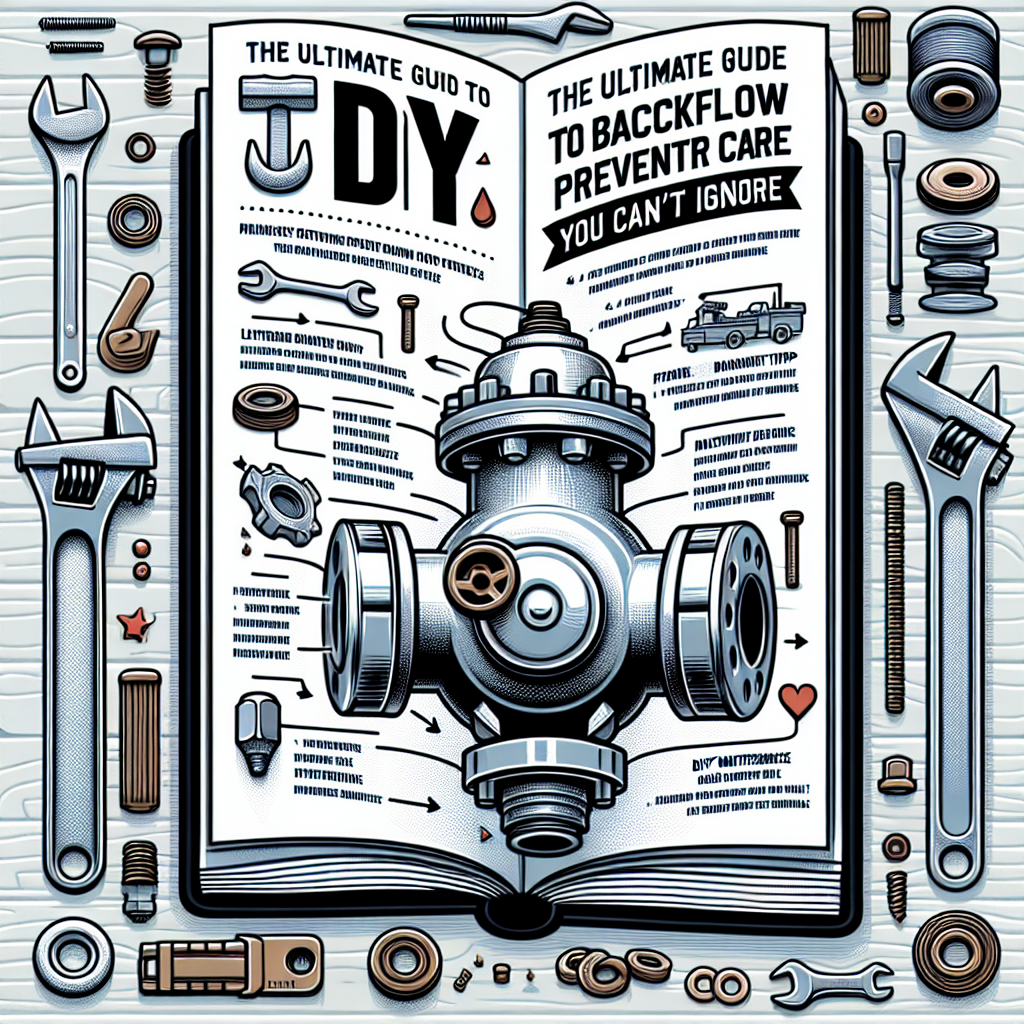The importance of safeguarding our drinking water cannot be overstated. One crucial apparatus that plays a vital role in ensuring our drinking water remains uncontaminated is the backflow preventer. Whether you’re a seasoned homeowner or a new property manager, understanding how to maintain your backflow preventer can save you time, money, and ensure the health of everyone relying on your water supply. In this ultimate guide, we will dive deep into the world of backflow preventers, providing DIY maintenance tips you can’t ignore.
What is a Backflow Preventer?
Before we jump into maintenance, let’s clarify what a backflow preventer is. Essentially, a backflow preventer is a plumbing device that prevents contaminated water from flowing back into the clean water supply. This device is crucial in keeping our drinking water safe from potential contaminants, including chemicals and harmful bacteria.
Types of Backflow Preventers
Understanding the type of backflow preventer you have is critical for effective maintenance. The most common types include:
-
Reduced Pressure Zone (RPZ): Best for high-risk installations, RPZs come with two check valves and a relief valve to maintain constant pressure.
-
Double Check Valve Assembly (DCVA): Suitable for lower-risk situations, these consist of two check valves that prevent backflow.
- Pressure Vacuum Breaker (PVB): Typically used in irrigation systems, PVBs utilize air to break the siphon effect that can cause backflow.
Why Regular Maintenance Matters
Just like any mechanical device, backflow preventers require regular maintenance to function correctly. Neglecting maintenance can lead to:
- Water contamination
- Equipment failure
- Increased repair costs
- Regulatory penalties
Keeping your backflow preventer in tip-top shape ensures it effectively protects your water supply and prolongs its service life.
DIY Maintenance Tips for Your Backflow Preventer
1. Regular Inspections
Make it a habit to inspect your backflow preventer at least once a year. Look for:
- Visible Damage: Cracks or corrosion can indicate issues.
- Leaking Water: If you notice any leaks, it’s time to investigate further.
- Accumulation of Debris: Remove any leaves, dirt, or debris that could affect performance.
2. Test the Valves
Testing your backflow preventer valves regularly will help ensure they function properly. Here’s how:
- Shut Off Water Supply: Turn off the main water supply to the backflow preventer.
- Open Test Cocks: Use a pressure gauge to check the pressure readings from the test cocks.
- Review Readings: Consult your backflow preventer’s manual for the acceptable pressure readings.
3. Clean the Filters
Many backflow preventers come with filters that can become clogged over time. Cleaning these filters is essential:
- Turn Off Water Supply: As with testing, always begin by shutting off the water.
- Remove Filter: Follow your model’s instructions to safely remove the filter.
- Clean Thoroughly: Rinse the filter under water and gently scrub with a soft brush if needed.
4. Know Your Local Codes
Different regions have different requirements for backflow preventer maintenance and testing. Familiarize yourself with local plumbing codes to ensure compliance and safeguard your water supply. Regular testing might be required annually or bi-annually, depending on regulations.
5. Winterizing for Cold Climates
If you live in an area with freezing temperatures, it’s crucial to winterize your backflow preventer:
- Drain the Device: Shut off the water supply and drain all water from the system to prevent freezing and cracking.
- Insulate: Use insulation tape or a cover to protect your backflow preventer from extreme cold.
When to Call a Professional
While many maintenance tasks can be done DIY, some scenarios call for a pro:
- Persistent leaks despite your efforts
- Damage to the device
- Issues with pressure readings
In these cases, calling a licensed plumber with experience in backflow preventer systems is essential for reliable repairs.
Conclusion
Maintaining your backflow preventer is a simple yet essential task that can safeguard your water supply, protect your health, and save you money in the long run. By conducting regular inspections, testing valves, cleaning filters, and understanding local codes, you can ensure that this crucial device works optimally. Remember, proactive maintenance today can prevent complex and costly repairs tomorrow.
Don’t overlook your backflow preventer—take care of it as it takes care of you! If you’re not comfortable with some of these tasks, don’t hesitate to reach out to a qualified professional. Your health and safety are worth it.


